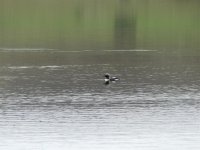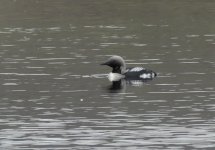When shooting at long distance, no matter what the lens size or sensor size, you need to shoot at a pretty good shutter speed. The general rule is 1 / (k * focal_length), where k is 1, 1.25, or 1.5 or so. For example, if shooting at 600mm equivalent, you usually want to shoot around 1/600 - 1/1250. Image stabalization can give you a few stops improvement, where each stop is 2x, so 2 stops of IS would be 1/125 - 1/320 (rounding a bit). That's a minimum. Basically, it's how much shake you have versus how much a small angular deflection matters. The longer the equivalent focal length, the more it matters.
From cropping, you can usually get 1.4x - 2x of improvement (in a linear length measurement). Smaller sensors usually crop less well than larger sensors. Lower ISO also helps.
I think the sony would probably crop down to 900mm - 1500mm equivalent, assuming you shot well enough to have a sharp image. You'd be at a 5MP equivalent photo cropping down to 1200mm equivalent (1/4 the 21MP native). For most personal use, 5MP is just fine. I believe you can also shoot raw mode on the sony which helps cropping as you are not fighting the jpeg artifacts.
The p900 will go out to 2000mm without crop. it only shoots jpeg, so I did not find it crops that well, especially as you're up in higher ISO a often. I think it also caps out at 6400 ISO (vs 12800 sony). But it has pretty good IS (VR) so photographing stationary or slow moving things works pretty well. Again, your shooting technique needs to be good enough to get crisp images, though the automatic modes (e.g. P) do a decent job picking good shutter speeds.
I think the Sony is a better camera and has features like recording photos before you press the shutter release so you can go back in time, so to speak. I find the Sony menus awful and the RX10 is no exception. For an all-around camera, however, go with the Sony. If reach is your main concern, the P900 / P1000 would be your choice. I've not used the P1000, but I understand it takes good photos too and is likely more competitive with the RX10 on features. It's a lot bigger than the P900 though.
There's a pretty active P1000 thread on the forums you could check out.
Marc









